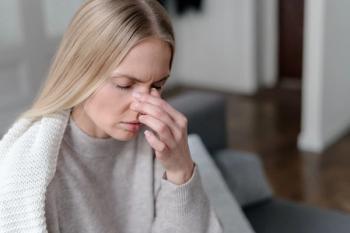
Patients With Early Small Cell Lung Cancer Respond Favorably to Opdivo, Yervoy Combo
The study showed that using tumor mutation burden (TMB) can be beneficial for predicting patient response to the combination of 2 immuno-oncology therapies.
Bristol Myers-Squibb has announced results that show patients with early-stage lung cancer had a more favorable treatment response to nivolumab (Opdivo) and ipilumumab (Yervoy) in combination than nivolumab alone. The announcement also includes the first report of tumor mutation burden (TMB) being used as a potential predictive biomarker for 2 immuno-oncology (I-O) agents in combination.
The company
“These exploratory TMB data from CheckMate -032 are the first to show the potentional of using mutation burden to predict response in some patients with the combination of 2 I-O agents,” said Matthew D. Hellmann, MD, study investigator, Memorial Sloan Kettering Cancer Center, in a statement.
As cancer progresses, mutations that are not seen in normal cells of the body accumulate. TMB is the measurement of the quantity of mutations carried by tumor cells. Nivolumab is a programmed death-1 immune checkpoint inhibitor designed to work with the body’s immune system to stop the spread and growth of cancer cells.
Phase 1 and 2 of the CheckMate -32 trial showed that the overall response rate with nivolumab was 21%, while the overall response rate to the I-O combination was more than double that (46%) in patients with high TMB.
For patients with high TMB the overall survival rate of those treated with nivolumab at one year was 35%, and the overall survival rate of patients treated with the I-O combination was 62%.
Patients with medium TMB who were treated with nivolumab had an objective response rate of 7% and patients with low TMB had an objective response rate of 5%.
Patients with medium TMB who were treated with nivolumab plus ipilumumab had an objective response rate of 16% and patients with low TMB had an objective rate of 22%.
At 1 year, 26% of patients with medium TMB being treated with nivolumab were alive, and 22% with low TMB were alive.
For patients who received the I-O combination, 20% of those with medium TMB were alive at one year, and 23% of those with low TMB were alive at 1 year.
“Assessing the effect of TMB on treatment outcomes has been an important part of our ongoing translational medicine research,” said Nick Botwood, MD, development lead, thoracic cancers, Bristol-Myers Squibb, in a statement. “We are committed to our ongoing thoracic cancer development program, focused on identifying patients most likely to benefit from immunotherapy.”
Newsletter
Stay ahead of policy, cost, and value—subscribe to AJMC for expert insights at the intersection of clinical care and health economics.








